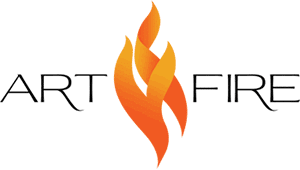9 eBay Alternatives: The Best Seller-Friendly Marketplaces To Consider
eBay sellers have had enough. They are paying more in fees, struggling to keep up with ever-changing policies and battling with technical problems like site outages.
Many also feel that over time, the marketplace has lost its person-to-person feel, and is no longer as friendly to small businesses. Sellers feel like they are losing their identity. As a result, some are now looking for alternative marketplaces to sell their products on.
In this post, we’ll be exploring several eBay alternatives. All of them have similar characteristics to eBay, like being listing-driven, but they also have elements that sellers feel eBay has lost, like a person-to-person, community feel. Some of these marketplaces will allow sellers to list virtually anything, whereas others are more niche.
Also check out our guide to Amazon alternatives.
At a glance
| Marketplace | Operates In | Product Categories | Sales Commission |
|---|---|---|---|
|
Bonanza
| US, UK, Canada etc. | All | 3.5% |
|
eBid
| Everywhere | All | 0%-3% |
|
eCRATER
| US, UK, Australia | All | 2.9% |
|
Etsy
| Everywhere | Arts, crafts and collectibles | 3.5% |
|
ArtFire
| US | Vintage, handmade, gifts, crafts etc. | 3%-9% |
|
Notonthehighstreet
| UK | Gifts, handmade, home, jewelry etc. | 25% including payment |
|
Ruby Lane
| US | Antiques and vintage | No commission but monthly fees apply |
|
GunBroker.com
| US | Guns, hunting, military and taxidermy | 6% of the first $250, 3.5% thereafter |
|
Reverb
| Everywhere | Musical instruments and equipment etc. | 3.5% |
eBay alternatives where you can sell anything
There are a number of marketplaces out there that have very similar characteristics to eBay. What do I mean by this? Well, they are all listing-driven marketplaces, where sellers own their listing, instead of being dumped onto one listing with all the other sellers offering that product. They also give sellers the chance to make themselves unique, by offering some ability to brand their listings.
The final aspect is that these marketplaces have a community feel, harking back to the person-to-person vibe that eBay used to have. This means that they aren’t just full of big companies, and competition on the marketplace is fair.
Bonanza

Operates in: US and UK
If you’re already selling on eBay, it’s really easy to get started on Bonanza, as you can import your existing eBay listings. You can also import your feedback into Bonanza, which is really useful if you’ve already built a great reputation on eBay. The comments themselves don’t come across, but the number of positive, neutral and negative reviews that you’ve received does.
eBay sellers may be pleased to hear that Bonanza has a real person-to-person feel, thanks to the live chat feature that allows sellers to build relationships with potential buyers. It doesn’t cost anything to list on Bonanza, but sellers pay a fee of 3.5% for every item they sell.
Visit Bonanza’s seller portal
eBid

Operates in: Everywhere
Another option is eBid, which allows sellers to create fixed-price listings, or run auctions. The site has a real community feel thanks to features like the Buddy Points system. This rewards buyers for purchases they make and sellers for receiving good feedback.
eBid offers two types of seller account. The first, is a basic selling account, which allows you to list for free, but you pay a fee of 3% when you sell an item The second choice is to pay a one-off fee of $99.98 and get a SELLER+ account. This way you never have to pay commissions again.
The SELLER+ account comes with more features, like the ability to import listings from Amazon, eBay and Etsy. It also allows sellers to run up to five stores, which can all be personalized.
Visit eBid’s seller portal
eCRATER

Operates in: US, UK and Australia
eBay sellers should also check out eCRATER, as it’s easy to use, and allows sellers to have their own identity. Let’s look at designing your store for example. You can choose from a number of templates, add your logo and choose which of your products are shown in prominent positions. Your store also has its own URL, which you can customize to include the name of your business.
Setting up a store on eCRATER is free, and you only pay a fee of 2.9% when you sell an item. To sell on eCRATER in the US, you must be able to ship your products throughout the country.
Visit eCRATER’s seller portal
eBay alternatives for niche products
As well as the sales channels that we’ve already covered, there is a wide range of niche online marketplaces out there. The majority of them share similar characteristics to eBay. You get your own store and can develop your own identity, but you are limited to what you can sell.
Etsy
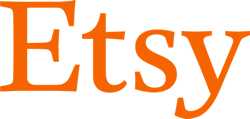
Operates in: Everywhere
The most popular category of niche marketplace is crafts and handmade, with Etsy leading the way. Their 1.9 million sellers offer products across a range of craft categories including craft supplies, handmade products, vintage clothing and collectibles.
Much like eBay, each product has its own listing. There is also a nice community vibe and buyers can get a great feel for what you and your business are about, through the “meet the owner” section.
In terms of fees, it costs $0.20 to list an item on Etsy, regardless of whether it sells. A listing stays active for up to four months, and renewing it costs a further $0.20. In addition, Etsy charge a commission of 3.5% of the final sales price, when you sell a product.
Visit Etsy’s seller portal
ArtFire
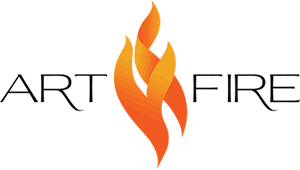
Operates in: US
ArtFire is a marketplace for handmade, artisan and vintage products, as well as craft supplies. Once again, sellers get their own listings and can have their own customizable store. These showcase your products, and help buyers find items more easily, through the search function or the featured products section. Interestingly, ArtFire also lets sellers add blog articles to their seller profile.
A common criticism of small marketplaces is their lack of tools, but this is an area where ArtFire is quite strong. It has a bulk editing tool, options for creating sales, and a remote checkout widget which can be added to your blog or website.
ArtFire offers three different monthly subscription options for sellers. The cheapest is $4.95 but on this plan, sellers have to pay a $0.23 listing fee and a 9% final value fee. The other two plans, which are $20 and $40 per month, have no listing fees and final value fees of 3%. The difference between the two is the maximum number of active listings you’re allowed to have.
Visit ArtFire’s seller portal
Notonthehighstreet
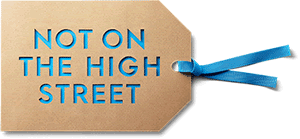
Operates in: UK
Notonthehighstreet is a marketplace that offers unique, personalized and handmade products, with over two million unique visitors per month. You have to apply to sell on Notonthehighstreet, and their standards are quite high. The application form will ask for details about the products you want to sell, so be prepared to upload good quality images.
If you’re approved to sell on Notonthehighstreet, then there’s a one-off joining fee of £199. The marketplace also takes commission of 25% of every sale you make. As such, it’s important to make sure that you have the margin to make selling on Notonthehighstreet viable.
Notonthehighstreet has a clean, professional feel that other craft and handmade marketplaces lack. It also gives sellers a great chance to brand themselves, as they can tell their story, explain how their products are made, and add pictures to their profile.
Currently, only UK-based businesses can apply to sell on Notonthehighstreet, but they are planning to expand their program to include international sellers.
Visit Notonthehighstreet’s seller portal
Ruby Lane

Operates in: US
Another option is Ruby Lane, where sellers offer vintage fashion, alongside vintage collectibles and high-end antiques. Before sellers can start their shop, they are pre-screened by Ruby Lane’s in-house team of seasoned art and antiques professionals.
There are no auctions on Ruby Lane, as all listings are in a fixed-price format. Sellers do have the choice to allow offers though, which Ruby Lane’s software can automatically accept, reject or counter for you.
If you are approved to sell on the marketplace, then you must have ten items for sale in your store at all times. You also need to be aware of the different listing requirements for each “Lane” (their term for product category) such as jewelry or vintage products.
The fee structure on Ruby Lane is a little more complicated than some of the other marketplaces in this article. There is a one time setup fee for stores of $100, which includes 10 free listings. After this, there is a listing fee of $0.19 per item.
In addition there is a maintenance fee, which starts a $69 per month, for up to 80 items. From your 81st to 150th product, you pay $0.30 per product and from your 151st to 1000th product, you pay $0.20 per product. For each product from your 1001st you pay just one cent.
Visit Ruby Lane’s seller portal
GunBroker.com
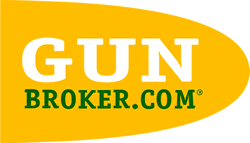
Operates in: US
GunBroker.com is an auction site for guns, hunting paraphernalia and military collectibles. Sellers have a lot of control on GunBroker.com, and can specify the length of auction, the payment methods accepted and their own return policy.
The marketplace is a mixture of auctions and fixed-price listings, with a lot of contact between buyers and sellers. For example, after a product is sold, you need to arrange payment and delivery with the buyer.
To sell on GunBroker.com, sellers must register and be legally allowed to own firearms, ammunition, knives and gun accessories. There are no listing fees but there are final value fees. For items up to $250, this is six percent of the sales price. For items over $250, GunBroker.com take six percent of the fist $250, and 3.5 percent of the remaining amount. So, if the product sold for $1000, you’d pay $41.25 in fees.
Visit GunBroker.com’s seller portal
Reverb
Operates in: Everywhere

The final marketplace we are going to cover is Reverb, where you can sell musical instruments, accessories and equipment. Each seller gets their own listing, in a fixed-price format, although they do have the option to accept offers.
Reverb has a few ways to promote your products, with the primary one being “Reverb Bump”. This allows sellers to pay to get more exposure to their listings. Bumped listings are displayed at the top of certain pages, in prominent positions.
There is also the Preferred Seller scheme, which is free for sellers to enroll in, once they meet the minimum requirements. This allows sellers to show badges on their profile, and gives them discounted fees and extra protection. It also makes you stand out from the crowd.
Reverb has no listing fees, and charges commission of 3.5 percent on every product that you sell. Their minimum selling fee is $0.50, and the maximum is $350.
Visit Reverb’s seller portal
In Summary
As eBay continues to evolve, it is understandable that sellers are starting to consider alternative sales channels. However, while it is not impossible, it is unlikely that one of these alternatives could be used to replace eBay all on its own.
Instead, you’re better off listing on several, and building a multi-channel strategy that incorporates eBay, but doesn’t make you completely dependent on it. This way, you have the best of both worlds. You can exploit the high traffic and vast support network of software, tools and experts that eBay has, while showing your identity and recapturing a community feel from other marketplaces.
This article was first published in April 2018, and last updated in August 2020.
tinyurlis.gdu.nuclck.ruulvis.netshrtco.de

